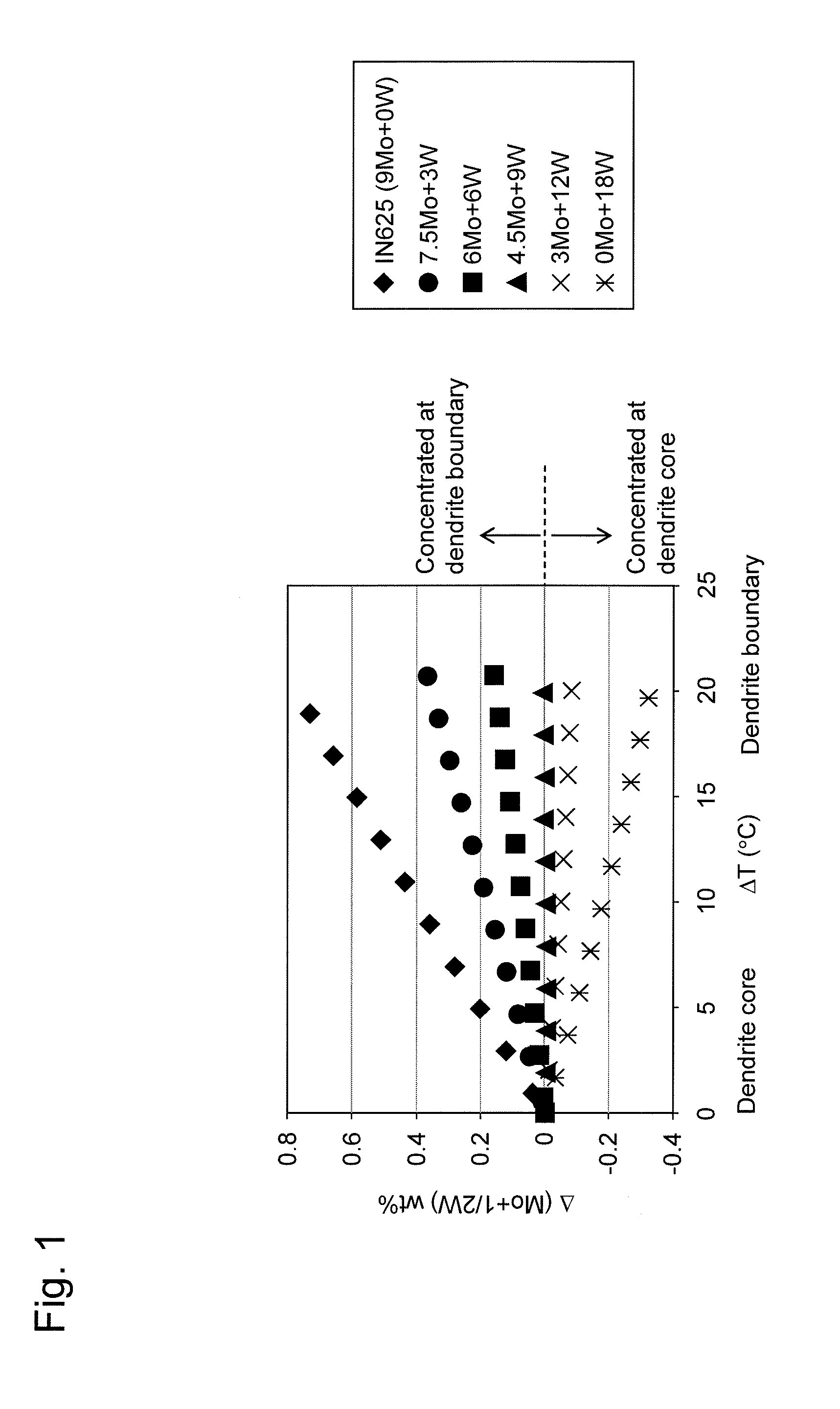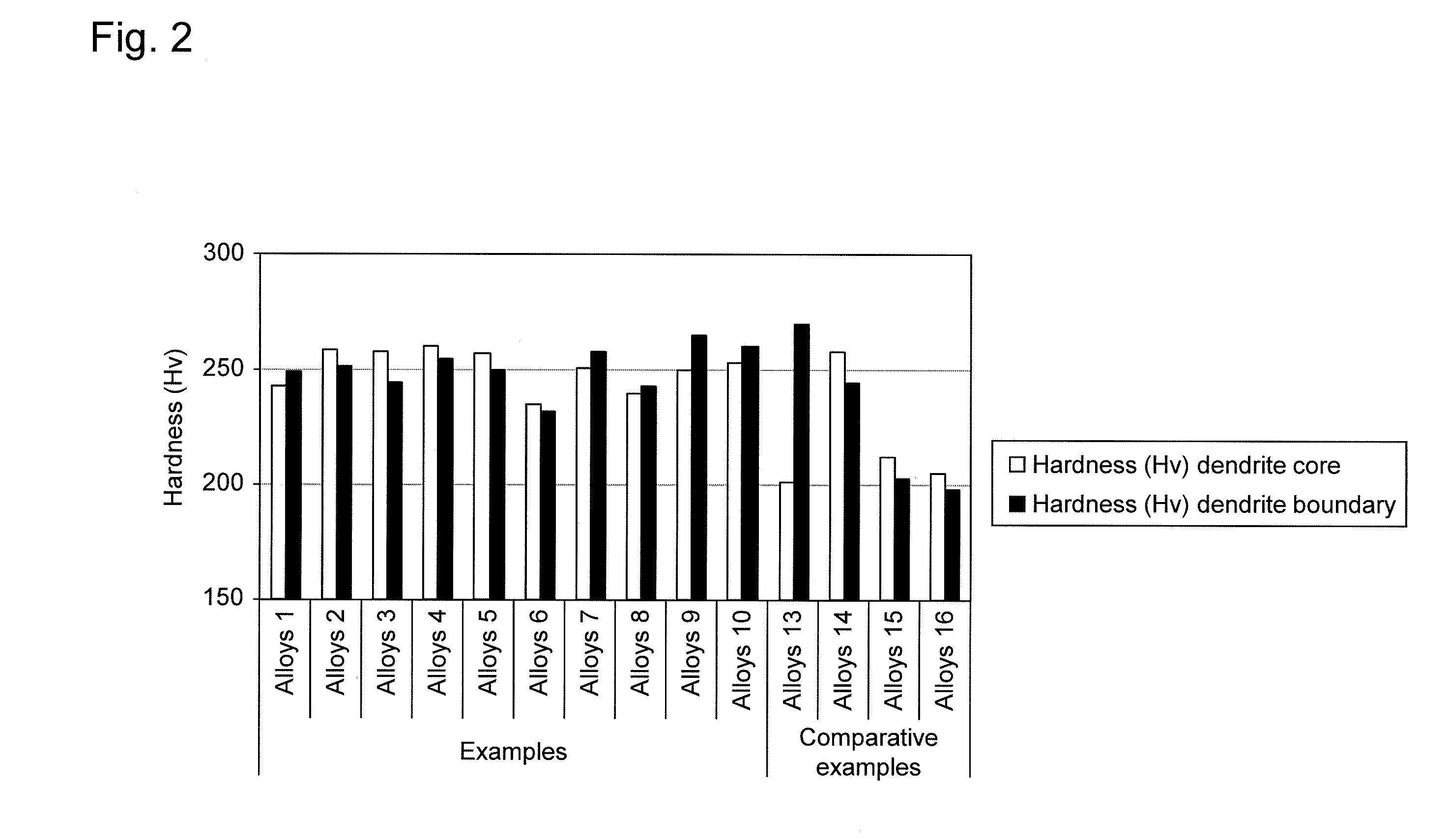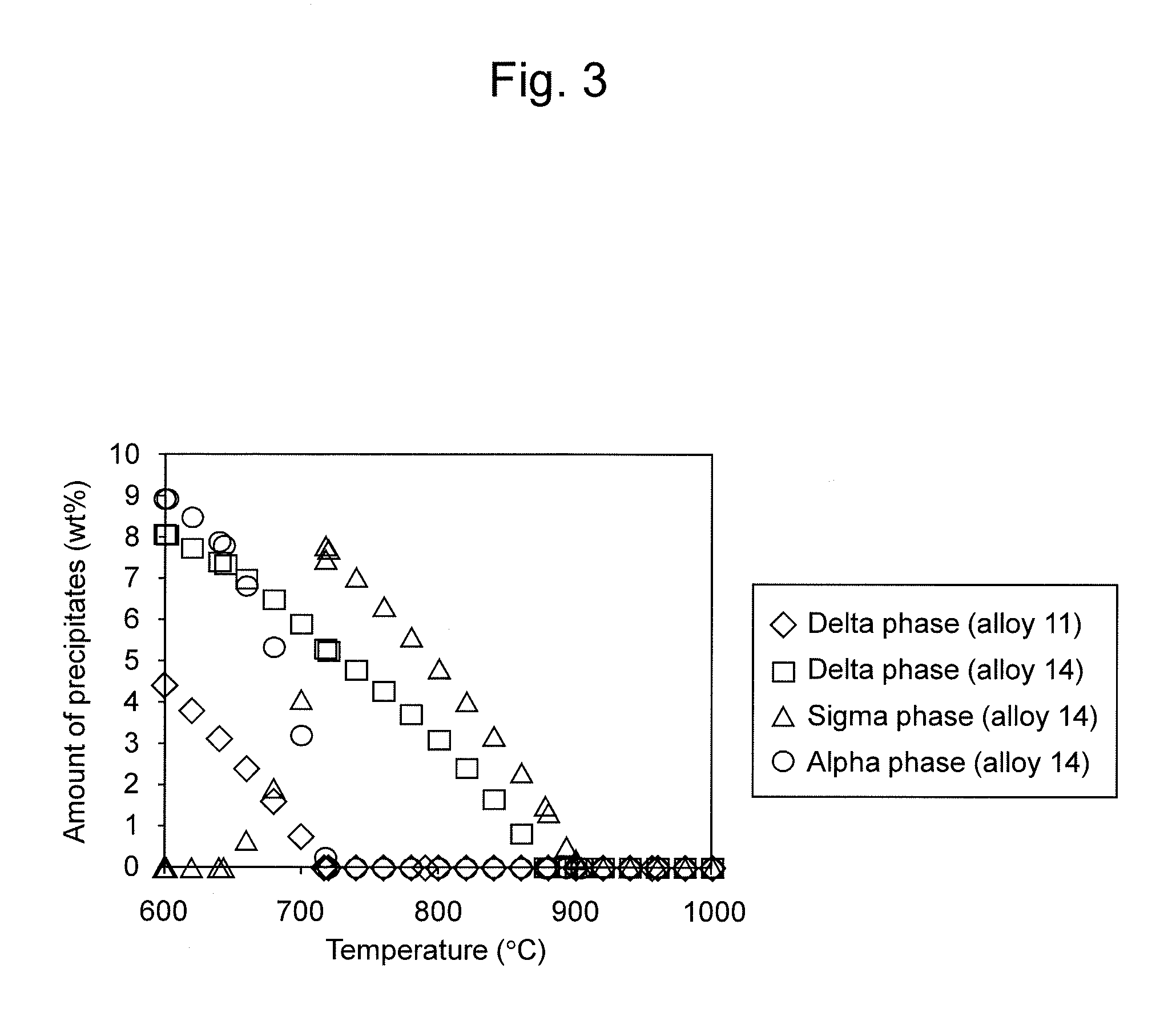Ni-Based Casting Alloy and Steam Turbine Casting Part Using the Same
a technology of steam turbine and casting alloy, which is applied in the direction of manufacturing tools, cores/yokes, and magnetic bodies, etc., can solve the problems of easy segregation, ti, and nb that contribute to an increase in strength, and difficult application of heat resistant ferritic steel to a 700° c.-level steam turbine, etc., to achieve the effect of reducing the variation of strength and increasing the extent of micro segregation
- Summary
- Abstract
- Description
- Claims
- Application Information
AI Technical Summary
Benefits of technology
Problems solved by technology
Method used
Image
Examples
examples
[0030]Although the present invention will be hereinafter described in further detail with reference to examples and comparative examples, the present invention is not limited thereto.
[0031]Table 1 shows the alloy compositions of samples. Alloy 13 in Table 1 is an alloy corresponding to Alloy 625. Ingots with such compositions were dissolved using a testing device, which simulates the large steel ingot manufacturing properties, so as to produce specimens with coarse structures with the same level of grains as those of large casting materials. After the structures were observed, the hardness of the dendrite core portions and the dendrite boundary portions was measured. FIG. 2 shows the results of the measurement of hardness. With regard to alloys 1 to 10 of the examples, substantially uniform hardness is obtained. However, alloy 13 of a comparative example has large variations in hardness. Alloy 14 also tends to have large variations in hardness though they are not as great as those o...
PUM
| Property | Measurement | Unit |
|---|---|---|
| thickness | aaaaa | aaaaa |
| weight | aaaaa | aaaaa |
| steam temperature | aaaaa | aaaaa |
Abstract
Description
Claims
Application Information
 Login to View More
Login to View More - R&D
- Intellectual Property
- Life Sciences
- Materials
- Tech Scout
- Unparalleled Data Quality
- Higher Quality Content
- 60% Fewer Hallucinations
Browse by: Latest US Patents, China's latest patents, Technical Efficacy Thesaurus, Application Domain, Technology Topic, Popular Technical Reports.
© 2025 PatSnap. All rights reserved.Legal|Privacy policy|Modern Slavery Act Transparency Statement|Sitemap|About US| Contact US: help@patsnap.com



